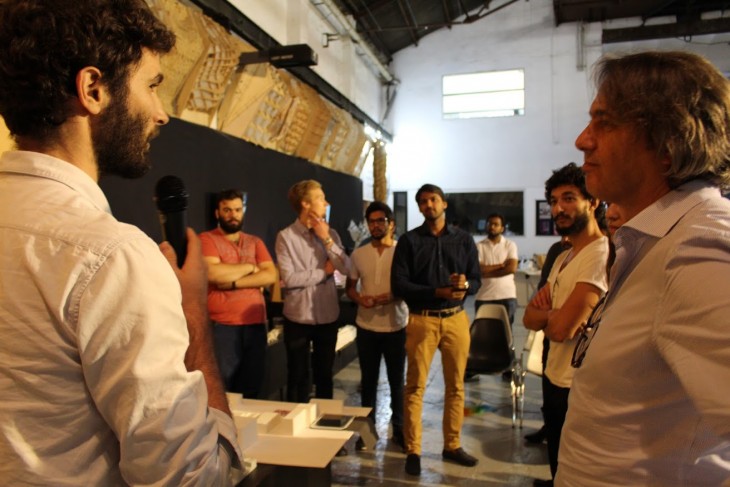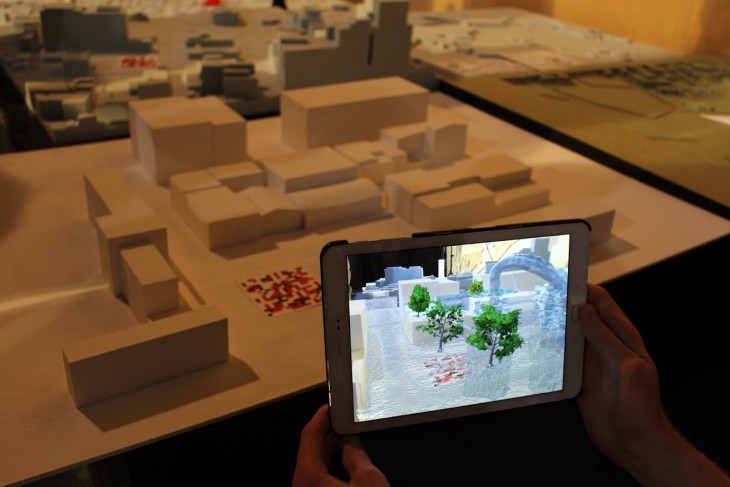Intelligent Cities // Final Presentations
On the 20th of June we had the Final Presentations of Intelligent Cities Research Studio, led by Willy Müller and Jordi Vivaldi (Senior Faculty) with Starks Lara (Studio Support Seminar), Maite Bravo (IAAC Theory Advisor), Pablo Marcet (Faculty Assistant). The guest jury included IAAC Academic Director Areti Markopoulou, Academic Coordinator Mathilde Marengo, MAA Coordinator Marco Ingrassia and Theory Advisor Manuel Gausa; as well as Luis Falcón (IntAtlas Co-Founder & CEO), Guillermo Reynes (Guillermo Reynes Architecture Studio), Claudio Silva (NY Center for Urban Science & Progress – Head of Disciplines).

Willy Müller and Jordi Vivaldi introducing Intelligent Cities Final Presentations
The research studio proposed a methodology focusing on seven main aspects, considered crucial in order to deal with cities nowadays: megacities and programmed collapses, infrastructure and ecological failure, networks and productive city, metabolism and renaturalisation, hyper regions and slow city, public space and hyper-connected people, city-interface and open-source. This theoretical reflection has been implemented in a specific and extremely peculiar territory of the New York landscape: Newark.

The 19 Projects Speculating on the Future of Newark
The 19 projects presented proposed the future of the city as follows:
Barter Square – by Andres Felipe Mora Navarrete – gives Newark a public place for citizens to share and exchange their products and services. In-between Spaces – by Rana Abdulmajeed – is an hyper-connected environment for locals and tourists to create and sell their unique products.
The Data Centre – by Sureshkumar Kumaravel – monitors and shares data collected in Newark’s area for community building and security purposes. Secured Surfaces – by Vishnu Jadia – intervenes on city’s interfaces to enhance citizens interaction in public space and reduce crime.
The Urban Hub – by Abbas Kikali – is an intervention on Newark’s public transport that supports the decentralization of airport’s activities. AeroHub – by Sidharth Kumar – faces Newark’s airport overcrowding through the decentralization of activities and redesign of the terminal. Metropolis – by Sahana Sridhar – is a residential agglomeration connected to the hyper-region of Newark’s airport and train station.
The Life After Death Tower – by Michel Al Azzi – is a vertical system for car dismantling, shredding and recycling. IntersAction – by Mohamad El Atab – is a series of dynamic multifunctional structures, creating programmable city spaces at Newark’s crossroads. Urban Transubstantiation – by Firas Aafieddine – is a multi-layer mobility network for the future Newark, from the block to the city scale.
ReLab – by Stefan Fotev – is a recycling complex taking waste as the base stock of a new economic model, using advanced recycling technologies. Farmers’ Village – by James Nurtanio Njo – reactivates unused Newark’s parking lots and buildings by implementing urban farming in the city. UrbanPixel – by Abdullah Ibrahim – is a productive tower with an aquaponics system using local sources and involving users in food production.
The Wind Tower – by Nour Mezher – is a data-generated structure, merging architecture and infrastructure to produce energy for Newark. Nanopolis – by Fernando Baptista – is a green tech-park for the production of bio-medicines and tissues with 3D printing and nanotechnology. Photosynthetic Surfaces – by Borislava Lyubenova – is a decentralized water filtration micro-algae system allowing the recycle of wastewater. UrbanMegaSponge – by Maryan Ewais – is a performative voronoi landscape engaging flood’s natural force to filter and retain water.
CybEco – by Jonathan Irawan – is an anemophilic pollinator and seed-bank performing as an education facility for the Newark urban area. Hybritat – by Peter Geelmuyden Magnus – is a system to improve bio-receptivity and species protection in Newark’s urban environment.

Augmented Reality Demonstration during the Presentations
Intelligent Cities is one of the five research lines offered by the Master in Advanced Architecture. Learn more about its research challenges and applications by clicking here.
